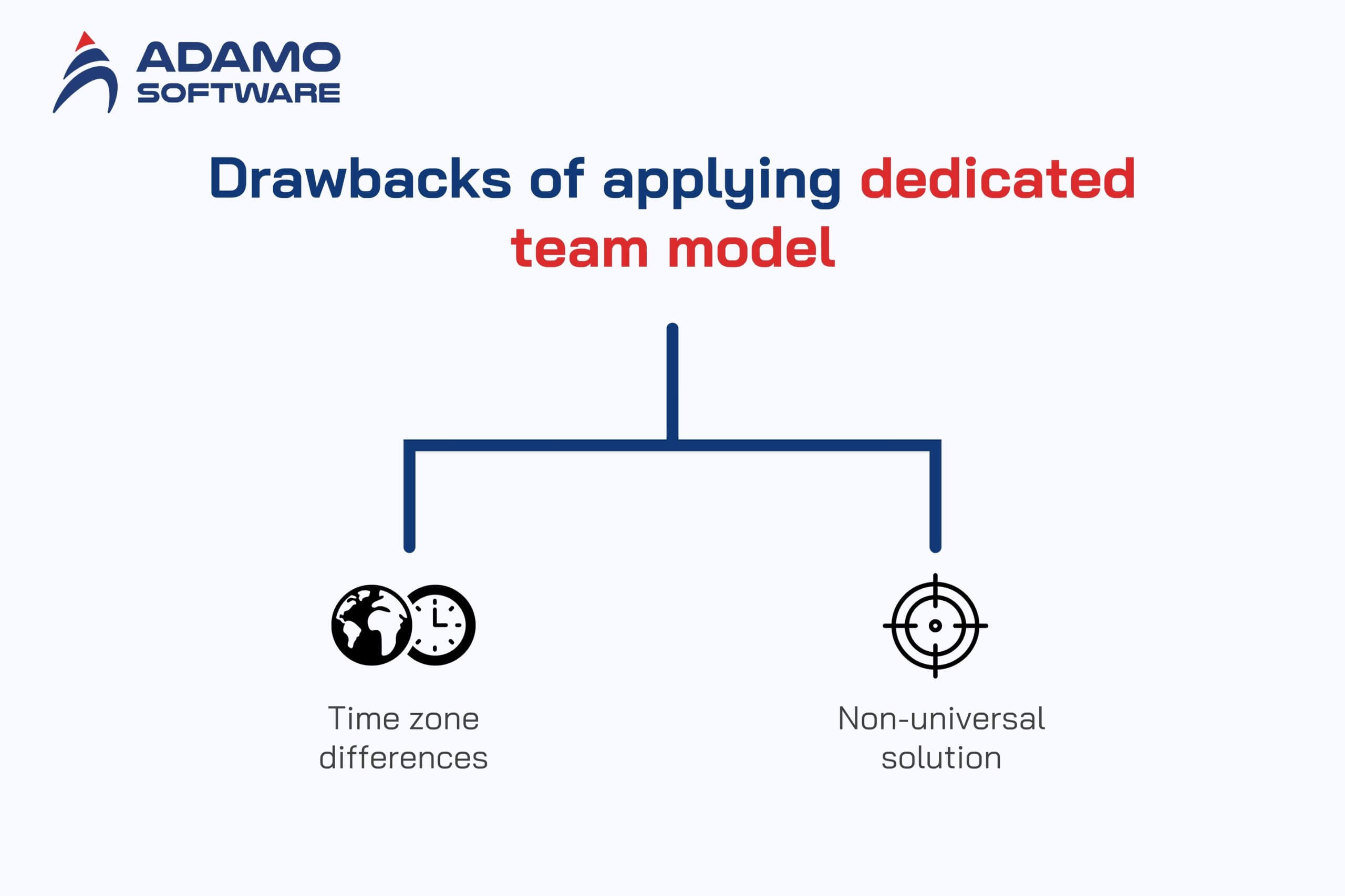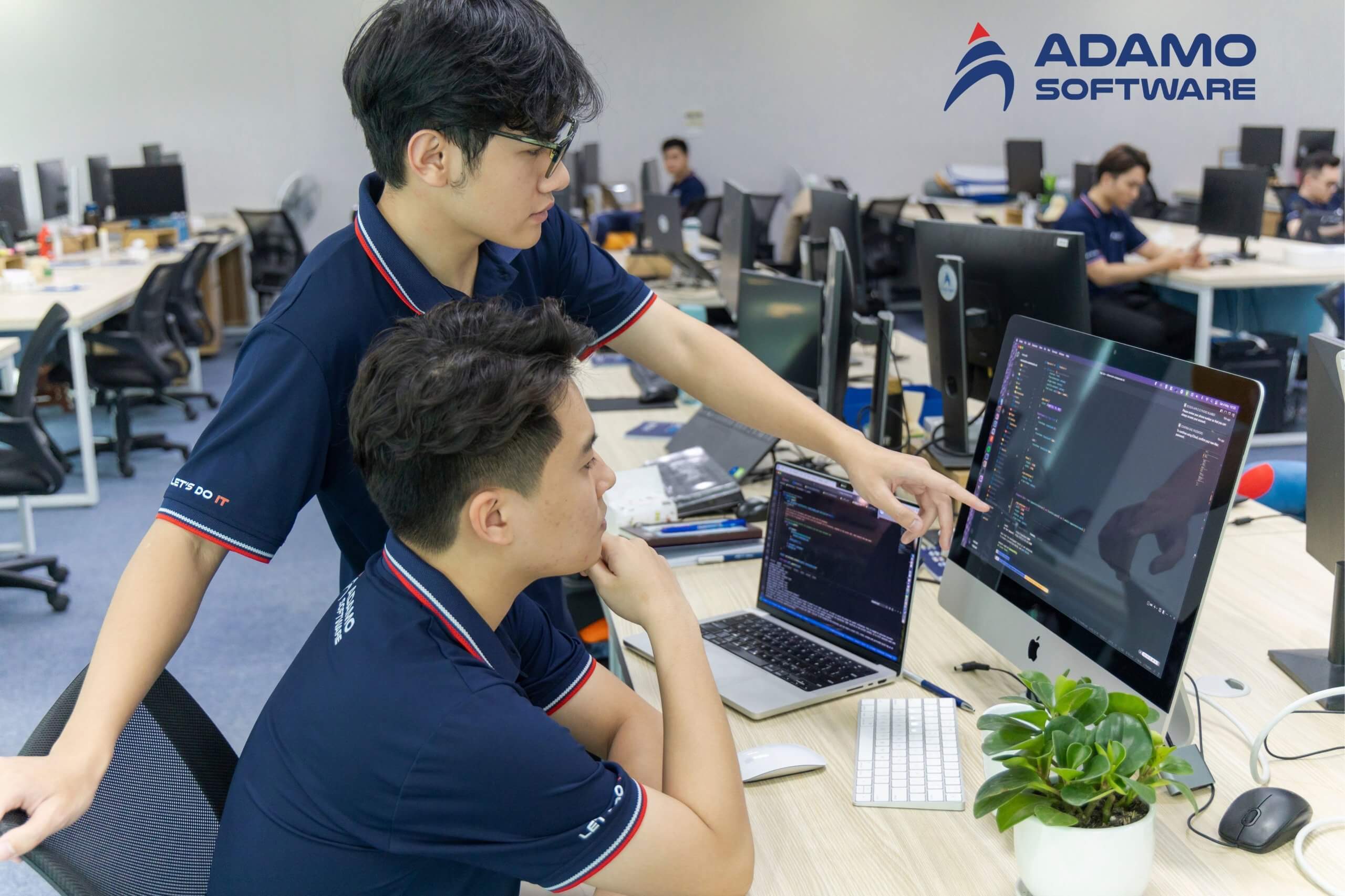Choosing the Dedicated Team Model: Timing and cost considerations

Innovation now centers around technology. Industries are rapidly advancing digitization and innovation to maintain competitiveness. Given the current economic conditions, technology leaders must maintain lean budgets. Nearly 50% of global business leaders are concentrating on operational efficiencies while also investing in innovation and growth.
Leaders need efficient processes for project delivery and skilled engineering talent to balance the costs and benefits of adopting new technology. As local talent becomes scarce, savvy tech leaders consider the alternative solution: A dedicated team approach from software development firms.
I. What is the dedicated team model?
A dedicated development team is a software development model involving long-term collaboration between a client and a service provider. All dedicated team members work solely for you, just like your in-house teams. The dedicated team typically works remotely, full-time, and reports directly to the client. This collaboration model is ideal for projects with flexible scopes or requirements.
You can hire specialists such as software engineers, designers, project and product managers, QA specialists, or business analysts using the dedicated team model.
II. How does the dedicated team model work?
It’s simplest to illustrate by showing how the work is split into various stages. The dedicated team model will be as follows:
A customer outlines requirements, desired outcomes, team size, and necessary skills.
An outsourcing company chooses suitable employees based on the project needs.
The workload is mutually agreed with the customer. Teams are formed, and work begins.
The team members concentrate exclusively on this project to achieve optimal results. The customer gains complete control over the project and the team.
This ensures high efficiency and motivation among specialists who share the customer’s vision for optimal results.
III. Benefits of hiring dedicated development team

1. Cost-effectiveness
Partnering with a dedicated development team is a smart way to maximize cost-effectiveness. Rather than employing a full in-house development team, you can pay solely for the team members you require.
A dedicated team model eliminates concerns about extra expenses like:
Costs associated with hiring, such as HR salaries;
Costs of employee training and retraining.
Labor expenses, such as salaries, taxes, bonuses, and medical insurance;
Costs for maintenance include office rent, daily lunches, and supplies.
Experienced professionals on board ensure development projects are completed quickly and accurately, avoiding unnecessary delays. If budget constraints are hindering your software development project, think about partnering with dedicated developers.
2. Faster time-to-market
A successful launch of a new development project needs a speed advantage. Every business aims to meet deadlines and begin generating revenue quickly. Hiring a dedicated development team can be very useful at this time.
A strong dedicated team model will possess all the resources needed to deliver your software product on time. They focus solely on your project, dedicating their full attention and effort to ensure success on launch day. If speed is essential for your product launch, hiring an experienced dedicated development team is a good choice.
3. Flexibility
Hiring a dedicated development team offers significant flexibility. You can change the team’s size and composition and adjust tasks or timelines to ensure alignment with your business goals and market conditions.
With a reliable development provider, you can skip the recruitment process and focus your resources elsewhere. Requesting changes to the development team composition is straightforward, and your provider can accommodate this promptly. A dedicated team model is like a versatile lego transformer, adaptable and rebuildable to ensure timely and budget-friendly project delivery. A dedicated development team allows for necessary changes while pursuing your business objectives.
4. Relevant expertise
When recruiting dedicated developers, consider looking beyond your local area. Widening your nets increases the chances of discovering specialists who possess a strong grasp of the latest technologies, development methodologies, and industry best practices. This is a clever step toward creating a quality product.
A dedicated development team with experience in similar projects will better understand potential roadblocks and address challenges more efficiently.
5. Transparent workflow
Partnerships with dedicated developers typically involve increased regulation and transparency. Development teams often utilize task management tools like Jira, Trello, and ClickUp to track progress and performance effectively. Set up these tools to receive notifications when tasks are completed.
You can also negotiate communication terms with the dedicated development team. Sending regular progress reports or having scheduled weekly calls with your dedicated development team ensures clear communication, eliminating uncertainty and providing peace of mind that your project remains on track.
Also read: Benefits of dedicated team model: Pros and Cons explained
IV. Drawbacks of applying dedicated team model
However, collaborating with a dedicated development team has its drawbacks. Here are some common challenges you might encounter:

1. Time zone differences
Hiring a dedicated development team from abroad means you should anticipate that time zone differences may hinder the project’s progress. Communication delays, slower response times, and challenges in scheduling meetings with the remote dedicated development team can occur, particularly when urgent tasks arise.
It’s important to clarify this point upfront to maintain work-life balance and prevent excessive overtime for everyone involved. Dissatisfaction could lead to the end of your cooperation.
2. Non-universal solution
Using dedicated team model may not fit all project needs, as it relies on various factors like project type, budget, deadlines, and business objectives.
For short-term projects, it may be wiser to choose a fixed-price model and hire freelancers to complete the work. If you require just a few developers for your project, hiring a dedicated development team might not be the most economical choice.
V. When should you hire a dedicated development team?
This cooperation model can be applied successfully in these cases:
You are establishing long-term strategic relations with a service provider company.
You require a full team of diverse specialists but hiring them for your company is not an option.
You anticipate that both the project’s requirements and team members may evolve during the development process.
Your goal is to expedite project completion while minimizing development costs.
Using the dedicated team model is recommended for projects sharing a common feature. This project will be continuously maintained and improved over time.

VI. Dedicated team vs Fixed-price model vs Time & Material model: Key differences
The dedicated IT team can be substituted with other common models: time and material and fixed price models. Here’s a comparison:
| FEATURE | DEDICATED TEAM | FIXED-PRICE MODEL | TIME & MATERIAL MODEL |
| Client involvement | High, with direct control and daily communication | Low, limited to milestone reviews | Moderate, involved in progress updates |
| Scope of project | Flexible, evolves over time | Fixed, well-defined from the beginning | Flexible, can adjust as project progresses |
| Estimated budget | Variable, based on team size and duration | Fixed, agreed upon upfront | Variable, based on hours and materials used |
| Team Stability | Consistent, same team throughout | Not guaranteed, depends on contract terms | May vary, team members can change |
| Best for | Long-term, complex projects | Short-term, well-defined projects | Projects with unclear or evolving requirements |
| Risk of overpayment | Low, only pay for your use | High, likeliness for overpayment if scope is misestimated | Medium, costs can rise with project scope |
| Flexibility | High, easily scale and adapt | Low, changes can be expensive and time-consuming | High, easily adaptable to modifications |
| Control over team | Full, client manages team directly | Minimal, client monitors milestones | Partial, client oversees progress |
| Delivery time | Can be adjusted based on evolving requirements | Fixed, determined by contract | Variable, depends on project complexity |
| Complexity of the project | High, suitable for complex, evolving projects | Low to medium, best for simple, clear projects | Medium to high, can cope with increasing complexity |
| Methodology | Agile, adaptable to project changes | Waterfall or linear, rigid and predefined | Agile or hybrid, adaptable to changes |
| Scalability | High, easily scalable based on project needs | Low, difficult to scale mid-project | High, scalable with evolving project needs |
VII. How to estimate the cost of dedicated development team model
Calculating the appropriate investment required to engage a dedicated development team can be complex.
The cost typically fluctuates based on several factors, including team size, developers’ geographical location, expertise level and roles of team members, as well as the project’s scope and duration.
Moreover, employing a dedicated team is significantly more cost-effective than sourcing each professional individually through the HR department.
VIII. Why choose Adamo Software for hiring dedicated development team
Dedicated software development team at Adamo leverages a comprehensive Agile project management model. We help you to build, motivate, and manage your projects of both custom software outsourcing and offshoring development works.

Alongside providing cost efficiency and flexibility, our dedicated teams guarantee comprehensive control and transparency, enabling you to closely oversee your project while we manage logistics, including hiring and infrastructure setup. The size of your team can be adjusted as your project progresses, ensuring the availability of appropriate resources at each stage.
Considering whether a dedicated team model is suitable for your needs? Contact us to optimize resources by allowing us to assist in extending your in-house team or establishing a dedicated team from the ground up.
FAQs
1. How do you manage a dedicated team model?
Effective management of a dedicated development team requires the establishment of clear communication channels and the definition of specific roles and responsibilities from the beginning.
Consistently assess progress via daily stand-ups or weekly meetings to maintain alignment with project objectives. Incorporate the team into current workflows and employ agile methodologies such as Scrum to ensure adaptability and responsiveness to alterations in project requirements.
2. What is the structure of a dedicated team model?
A standard software development team comprises specialists possessing diverse skill sets and expertise.
– Project Managers
– Front-end developers
– Back-end developers
– Full-stack developers
– Mobile app developers
– Web app developers
– DevOps engineers
– QA engineers
– UI/UX designers
– Business analysts











